The 16th Session of the Asia-Pacific Regional Space Agency Forum (APRSAF-16)
- Comments from Working Group Co-Chairs -
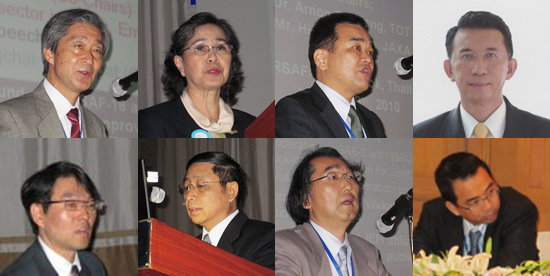

Dr. Takashi Moriyama
Earth Observation Working Group (EOWG) Co-chair
Fellow
Earth Observation Research Center
Japan Aerospace Exploration Agency (JAXA)
The number of participants of APRSAF-16 EOWG registered 153 participants, 78 organizations and 26 countries. Actually this was a historical record, and really reflected the wide-ranging interests and expectations regarding the Earth Observations of its potential to use disaster monitoring, land applications and environmental changes. Also, we never forget the GISTDA efforts to organize and host such a big conference, provide logistical support and social events. I would like to extend my heartfelt appreciations and congratulations to all those working for APRSAF-16 and EOWG. In particular, Dr. Darasri Dowreang, acting executive director of GISTDA and serving co-chair, who successfully proceeded EOWG.
Personally, I have traveled to Bangkok, Thailand more than 30 times, and every trip has been a very comfortable stay and experience. Tender smiles, delicious food, cheap living expenses, Buddhism, no jet lag, various shopping, moderate temperatures, entertainment, ....everything I really love it.
Among the EOWG subjects, SAFE (Space Applications For Environment) has achieved major progress, either ongoing or via new prototyping. Cambodia and Lao PDR have been successfully fulfilling projects, and the EOWG approved two further prototypes as follows:
- Assessment of vulnerabilities due to sea level rise on Sri Lanka Coast (Sri Lanka)
- Potential drought monitoring for agricultural areas on Java Island (Indonesia)
Currently, the WG is focused on much more practical subjects such as disaster monitoring, land cover changes, and so on, but after the SAFE initiative has been launched, member agencies have considered environmental applications such as the above topics. SAFE is willing to support those applications with volunteer donor agencies by providing data, tools, and technical support.
The other challenging topic is the private sector initiative to support EO data utilization for a wider range of applications in Asia-Pacific. This time we had the participation of 4 private companies to give presentations and engage in an overall discussion. What impressed me was their intention to join the preliminary study and launch projects like SAFE. SAFE is targeting the establishment of a comprehensive environment to use EO data for government public services such as water management, agricultural management, and environmental disaster monitoring and mitigation. In order to, in addition to prototyping, obtain a competitive budget like JST/JICA in Japan’s case, collaboration with the private sector in an end-to-end manner is vital. With this in mind, the project initial design has to be done jointly, with the perspective view of the goal. The next EOWG will welcome the private sector to propose new potential candidates for SAFE prototyping through consultation and study with Asia-Pacific countries, using their networks and connections.
Finally, this is my personal impression and thoughts through the APRSAF-16 and EOWG as described below. I hope these will be reflected in the next APRSAF and EOWG:
- Discussion is the key at this kind of conference. It seems to me that some means or idea should be given to stimulate such discussion. For example, in the case of EOWG, given the very limited time allocation, participants hesitate to raise their hands to extend their opinions. With this in mind, one idea is to reduce or eliminate country reports to save time for discussion.
- Collection / nomination of the title of topics for overall discussion in advance of the concrete program. To invite scientists, researchers, engineers, policy makers, and those who are experts on the topics might be a good way to do this. Panel discussion? Yes I would also recommend that.
I really hope the APRSAF and working group become more active, fruitful and constructive, and that everyone feels happy.
Thank you.
Takashi Moriyama
EOWG Co-chair

Dr. Darasri Dowreang
Earth Observation Working Group (EOWG) Co-chair
Acting Executive Director
Geo-Informatics and Space Technology Development Agency (GISTDA)
It was an honour for me to co-chair the EO Working Group with Dr. Moriyama in the 16th Session of the APRSAF in Bangkok. We had 153 participants from 78 organizations in 26 countries attending the two-day meeting. I believe it was the biggest gathering ever for this working group.
Amongst the various topics of discussion, including SAFE and Sentinel Asia programs and country reports, a joint meeting was held between the working groups on EO and Communication Satellite Application to discuss the CISCAI (Communication and Information Systems for the Control of Avian Influenza) project on Space Applications for Emerging Infectious Diseases. This project has illustrated the importance of cross technological applications and the fact that a joint meeting among the relevant working groups for problem solving is most beneficial.
It was also the first meeting in which the private sector was invited to participate and make presentations. This was an excellent initiative that exposed the group to progress and new developments in EO technologies and the group recommended that this activity be maintained.
Finally, I would like to extend my appreciation to JAXA and the Secretariat for their support and contributions that made the meeting a success. CONGRATULATIONS!
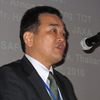
Mr. Hiroki Kohata
Communication Satellite Application Working Group (CSAWG) Co-chair
Senior Engineer
Satellite Applications and Promotion Center
Japan Aerospace Exploration Agency (JAXA)
The Communication Satellite Application Working Group, CSA WG, was held from 26-27 January, 2010. The WG saw 44 participants from 10 countries and 4 international organisations gather together and held discussions concerning the use of satellite communications and satellite positioning within the Asia-Pacific region.
The main agenda for the WG was to report the results of a workshop aiming to discuss the future capability of utilising GNSS; held in response to the recommendations of APRSAF-15. That workshop was organised from 25-26 January, on the eve of the WG and at the same venue as the APRSAF-16. With 195 participants attending from 95 organisations in 18 countries, it was a success. The workshop discussed aspects of future cooperation and activities through presentations and group discussions, and introduced the Asia-Oceania Multi-GNSS Demonstration Campaign. The Asia-Oceania Multi-GNSS Demonstration Campaign will help activate the use of GNSS. Japan also plans to start the Quasi-Zenith Satellite System (QZSS), aiming to expand the use of satellite positioning. Its first satellite is scheduled for launch this summer and the contribution is anticipated.
17 presentations were made in the WG, 6 of which concerned the WINDS and its experiments, 5 of which country reports on satellite communications and 5 GNSS-related matters respectively. One was operated during a joint session with EO WG.
Regarding WINDS, they made presentations about ongoing experiments in the Asia-Pacific region using WINDS, as well as the introduction of the satellite system. WINDS was first used by Sentinel Asia last year and some communities concerned with the WINDS experiment have been established in Thailand. It was reported that one of them, NECTEC, operated 6 experimental projects in 2009. These reports made me feel that the utilisation of WINDS has been steadily growing in the Asia-Pacific region.
As for country reports related to satellite communications, Thailand, India, Indonesia, Canada and Lao PDR reported and we shared their valuable experience and information. In particular, there was a report from Thailand regarding its tele-education with a history dating back 15 years, explaining the importance of continuous satellite utilisation. Also, India and Indonesia introduced satellite communications applications for disaster management, especially countermeasures against tsunami disasters.
There was a presentation titled “Space Applications for Emerging Infectious Diseases (EIDs)” by the ASEAN Foundation in the joint session with EO (Earth Observation) WG, which was conducted for the first time. The presentation consisted of the introduction of a project which would use satellite communications as a tool for countermeasures against avian flu and its expectations for the WINDS experiments were voiced. Since the value of jointly discussing an inter-WG matter was underlined, the expansion of the joint session is considered likely in future. In addition, the Healthcare Issue emerged as a new field of satellite communications.
Concerning GNSS, along with a report of the results of the First Asia Oceania Regional Workshop on GNSS, some presentations were selected from those of the workshop. Also, Japan reported the result of a positioning experiment. This workshop included 32 presentations and group discussions separated by the following 4 application fields:
- MultiGNSS network establishment
- Precise positioning
- Disaster management
- ITS, Mapping and LBS
Consequently, we formulated a common understanding regarding the "Asia Oceania Multi-GNSS Demonstration Campaign".
Through the above discussions, CSAWG summarised the results of its 2-day program and established recommendations for the plenary session.
In conclusion, I would like to thank all the participants in CSA WG, Dr. Arnon Tubiang from TOT of Thailand, who smoothly conducted CSAWG as a co-chair and the APRSAF Secretariat, especially Mr. Phuriway Ruengnaowaroj from GISTDA.

Dr. Arnon Tubtiang
Communication Satellite Application Working Group (CSAWG) Co-chair
Senior Executive Vice President of Core Network
Telephone Organization of Thailand (TOT)
I had the opportunity to participate in APRSAF-16, which was held in Bangkok, and had the great honor of welcoming all the delegates to Bangkok. I felt very fortunate as the co-chair of CSAWG, which provided good opportunities to all countries to exchange details of their status and their views/experiences.
In my opinion, it was a great and successful meeting. Participants in CSAWG could share their experiences and cooperation within the region was realized. It is important that satellite communication applications for tele-education, tele-medicine and disaster management take into account the needs to bridge the digital divide in this region. In addition, the issue of “Human Security” was raised in the joint session with EOWG. It confirmed that the people should strive for an even safer environment in future and this aspect would be increasingly focused on in upcoming meetings.
The meeting confirmed that the Asia-Pacific region must still work to bridge the digital divide and its nations need to help each other in developing applications of those who are in remote areas. I anticipate that we will continue contributing and promoting our collaboration by sharing and creating experiences, new applications, knowledge, resources, etc. in the communication satellite application issue.
Finally, I would like to say that I was delighted to attend and be the co-chair of CSAWG with Mr. Hiroki Kohata, JAXA. His great help as co-chair was much appreciated. In conclusion, this meeting proved that our collaboration is vital to bridge the gap in applications and many related issues.
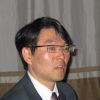
Dr. Takashi Kubota
Space Education and Awareness Working Group (SEAWG) Co-chair
Professor
Department of Spacecraft Engineering
Japan Aerospace Exploration Agency (JAXA)/ISAS
The Space Education and Awareness Working Group (SEA-WG) has promoted space education activities since 2001, with the following aims: effectively using space materials to enhance education for young people; providing education and training opportunities for young people in space science and technology; contributing to enhancing mutual understanding among countries in the region through exchange opportunities for young people; and increasing public awareness of the societal benefits and importance of space activities.
The SEA Working Group members met in Bangkok, Thailand, on 26 and 27 January, 2010, during APRSAF-16. The Working Group meeting was co-chaired by Dr. Surachai Ratanasermpong (Thailand) and Dr. Takashi Kubota (Japan). There were more than 30 participants from 13 countries and 3 international organizations in the working group this time, and we eagerly discussed how to promote space education. At the beginning of this meeting, the very attractive activities for space education made by each country in 2009 were so earnestly introduced that I wished we had more presentation time. I think we were greatly stimulated by learning about each educational activity and could connect that to the next step.
The attendees of the WG meeting widely exchanged their opinions on the following items and confirmed the promotion of various kinds of activities:
- Activities for primary and secondary school students and teachers, including the Water rocket convention, Poster contest, Space education seminars or forums, etc.
- Educational activities to celebrate the International Year of Astronomy in 2009
- Effective use of satellite images for schools
- Joint educational initiatives for university and graduate students and young professionals
- Collaboration among space scientists or engineers and educators
- Ways and means to effectively exchange space education materials
- New and innovative funding sources to support space education activities
- Review of the outcomes of the work of the Working Group
The Fifth APRSAF Water Rocket Event was held in Khlong Luang, Pathum Thani, Thailand, on 23 and 24 January, 2010, immediately preceding APRSAF-16, and hosted by the National Science Museum (NSM) of Thailand. 53 students and 23 teachers and leaders from 15 countries participated in the water rockets event. During the orientation, students introduced their countries in their own ways, which made for a very friendly atmosphere. At the convention, the competitors were interested in the rockets of their opponents due to the different shapes and production methods, despite the fact the same materials had been used, and this interest helped spark international exchange. We realized that we could truly practice space education through these rockets. I express deep appreciation to all the staff of NSM Thailand for their excellent support for the Water Rocket Event.
Furthermore, the working group organized the Poster Contest during APRSAF-16. The theme of the Poster Contest was "The Universe ? Great Discover" and 28 posters made by children aged eight to eleven from 10 countries were on display during the event. In the plenary session on January 29, we reported that some excellent art had been selected in a vote by the participants of APRSAF-16. I was moved when some people who were impressed by the developed creativity of the children gave them great applause. I express deep appreciation to Mr. Satit Tisayakorn (GISTDA) and Ms. Emiko Ando (JAXA) for their excellent support for the Water Rocket Event.
We confirmed in this meeting that we would promote various kinds of popularization activities for space education through this working group.
Finally, I am deeply grateful to the staff of GISTDA who hosted this APRSAF-16, to the secretariat of SEA WG, Ms. Takemi Chiku, to the co-chair, Dr. Surachai Ratanasermpong and also to all members and collaborators of WG.
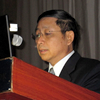
Dr. Surachai Ratanasermpong
Space Education and Awareness Working Group (SEAWG) Co-chair
Deputy Executive Director
Geo-Informatics and Space Technology Development Agency (GISTDA)
The Space Education & Awareness Working Group (SEA WG) at APRSAF-16 was held during January 26-27, 2010 at Sofitel Centara, Bangkok, Thailand.
On behalf of the co-chair of the working group, I would like to give a brief summary and share my comments as follows:
In the meeting, the members first reported on space education activities in their respective countries. Thereafter they widely discussed and exchanged their opinions on the APRSAF committed activities, namely the water rocket event, poster contest, space education seminar/forum, the effective use of satellite images for schools, joint educational initiatives for university and graduate students and young professionals, ways and means to effectively exchange space education materials, new and innovative funding sources to support space education activities, and a review of the outcomes of the work by the working group.
This year the highlighted activity that should be honorably mentioned was the 5th Water Rocket event; hosted by the National Science Museum, Thailand. This event was held during Jan 23-24, 2010 in Pathumthani with an excellent arrangement and enjoyable environment. The 53 students and 23 teachers from 15 countries represents record numbers to date. I would like to give them a big hand and thank them very much for their work. A new project activity featuring the effective use of satellite images for schools called “GIS Toolkit for Schools” was proposed by GISTDA, Thailand, to be carried out under the APRSAF framework. The first technical workshop of the project is expected to be held in February 2011. APRSAF members from space education institutions, space research organizations and governmental agencies are invited to attend and we are looking forward to such activity.
The SEA WG agreed to continue the water rocket competition and poster contest for the following session in Australia (APRSAF-17). Possible improvements in various activities were recommended, i.e. advanced rocket launchers, a water rocket Wiki site, CanSat activity and available funding sources.
Finally, we hope that the promotion of our activities would help enhance the understanding of the younger generation and educators and that this may lead to the ability to apply them in daily life. The attention, efforts and support from society, government agencies, educational organizations and the community are all required.
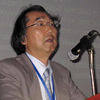
Mr. Tetsuo Tanaka
Space Environment Utilization Working Group (SEUWG) Co-chair
Director
Space Environment Utilization Center
Japan Aerospace Exploration Agency (JAXA)
The Space Environment Utilization Working Group (SEU WG) has discussed ways to facilitate the effective joint utilization of the space environment among Asia-Pacific countries, since JAXA proposed opportunities to use the JEM (Japanese Experiment Module), nicknamed “KIBO” at the 12th APRSAF in 2005. We have expanded the scope to general space environment utilization beyond ISS (International Space Station) /JEM utilization.
At the 16th APRSAF in Bangkok, the SEU WG meeting was held over 2 days on January 26 and 27. It featured 24 participants from 14 organizations of 8 countries in this working group, with lively discussion among the 11 presentations concerning each of the activities and achievements.
JAXA reported that the space experiments in the JEM Pressurized Module started in summer, 2008, whereupon the JEM Exposed Facility was launched and attached to the ISS in July, and a series of experiments on “KIBO” were implemented in various fields, including material sciences, life sciences, human research, astronomy, earth observation, education and the arts. In particular, it was a great pleasure for the working group participants to hear the on-orbit activity report from Dr. Koichi Wakata, JAXA Astronaut, who stayed onboard the ISS during the period March - July, 2009. JAXA also proposed an expansion of the “KIBO” utilization opportunity to APRSAF countries for education and outreach to public activities using “KIBO”. Many participants welcomed the completion of “KIBO” and the enhanced and successful opportunity to use “KIBO” that this represented.
NSTDA of Thailand reported on the status of activities of students’ parabolic flight experiment, a feasibility study on “rice flowering in space”, and the 5th Thailand microgravity Experiment AO, targeting parabolic flight and small space experiments.
ANGKASA of Malaysia reported on their philosophy and activities for Space Environment Utilization, focusing on education and promotion involving scientists and the public. They also presented their current cooperation with JAXA concerning student parabolic flight experiments and protein crystallization experiments in space. LAPAN of Indonesia reported the results of the ground experiment using a 3D clinostat as one of the JEM utilization feasibility studies.
KARI of Korea also presented Korean space activities and the progress of the feasibility study on “KIBO” utilization cooperation between JAXA and KARI.
In addition to these reports from the space agencies of each country, several reports were presented at the WG from participants, including the “Corporate Social Responsibility (CSR) project (HANA-DENSETSU) using “KIBO” as one of the means of using commercial base space by a commercial company in Japan, JAMSS (Japan Manned Space Systems activities and its results). Moreover, I would like to point out the fact that an incorporated foundation in Japan, named JSF (the Japan Space Forum) participated in this meeting for the first time, reported on the development of the “KIBO Hi-Vision Earth View” Educational System and invited APRSAF members as supporting entities for “KIBO Hi-vision Earth View” program implementation.
Following these presentations, many SEU-WG participants exchanged views on how to promote the use of the space environment within the Asia-Pacific region, and how to realize the joint utilization of “KIBO” among SEU-WG participants. All participants concluded that they will further encourage activities towards “KIBO” utilization, especially new action plans to realize joint “KIBO” utilization missions for education and outreach to the public, as well as scientific experiments among APRSAF participating countries. In addition, the SEU-WG agreed to expand the task force activities among SEU-WG participants, where the student parabolic flight contests are currently steered. The taskforce will coordinate joint cooperation plans, such as the utilization of data archives (photo and video) from “KIBO” on-orbit activities, and participation in the “KIBO Hi-vision Earth View” program.
I anticipate these education and outreach missions using “KIBO” will be realized as soon as possible in cooperation with APRSAF participating countries, and will contribute to fruitful space experiments in various fields.
Finally, I am grateful to Dr. Saran Poshyachinda, co-chair, Deputy Director, at the National Astronomical Research Institute of Thailand (NARIT) and all participants of the Space Environment Utilization Working Group for their help.

Dr. Saran Poshyachinda
Space Environment Utilization Working Group (SEUWG) Co-chair
Deputy Director
National Astronomical Research Institute of Thailand (NARIT)
First of all, congratulations for the successful launch of KIBO.
It was my pleasure to join APRSAF-16 as co-chair of the Space Environment Utilization Working Group (SEU-WG). During the 2 day meeting, it was a great opportunity for delegates from more than 10 countries to report on progress and share experiences in microgravity and parabolic flight research. More importantly, the availability of KIBO paves the way for Asia-Pacific researchers to propose new ideas and projects in utilizing the space environment for the benefit of mankind. Also worth mentioning is the presentation given by Dr. Wakata, the astronaut who spent several months on board the ISS last year.
Personally, joining SEU-WG was a fantastic experience for myself. The atmosphere during the meetings was always warm and cordial. It also opened the door to bilateral cooperation when delegates from different countries met in person. Thanks and praise go to Mr. Tetsuo Tanaka, JAXA co-chair, without whom, the SEU-WG meetings would not have gone so smoothly. Finally, I am sincerely grateful to GISTDA, one of the organizing agencies, for looking after us fabulously during the SEU-WG as well as the plenary sessions.
I look forward to joining APRSAF-17 in Australia.